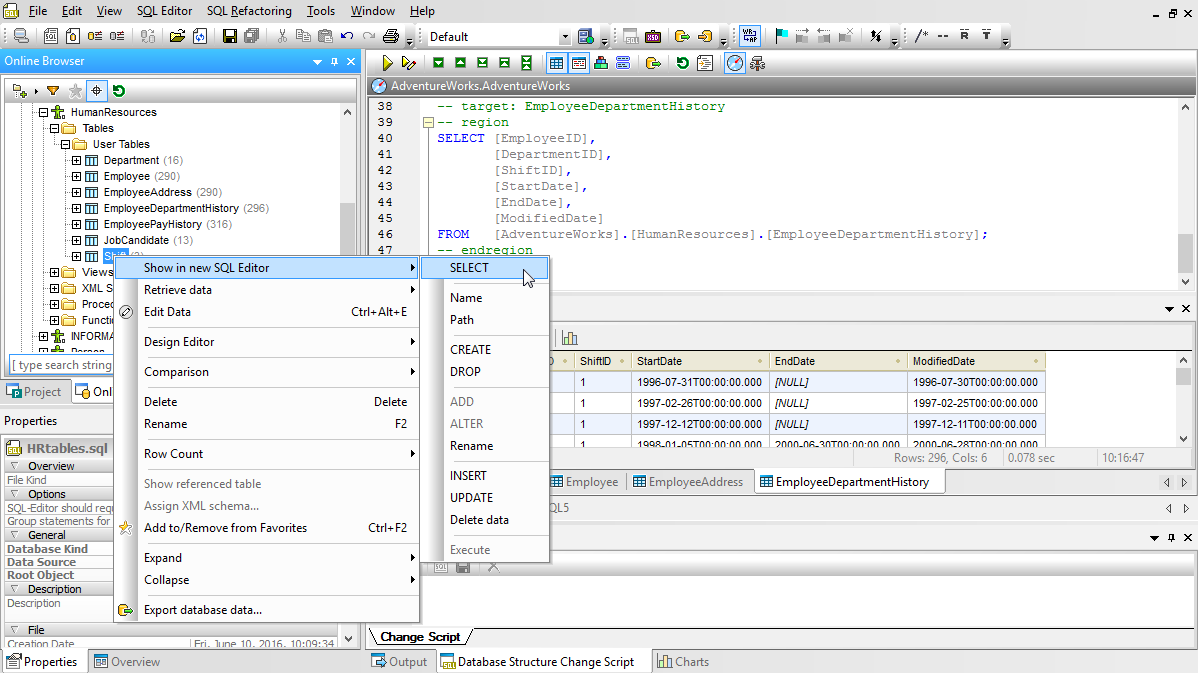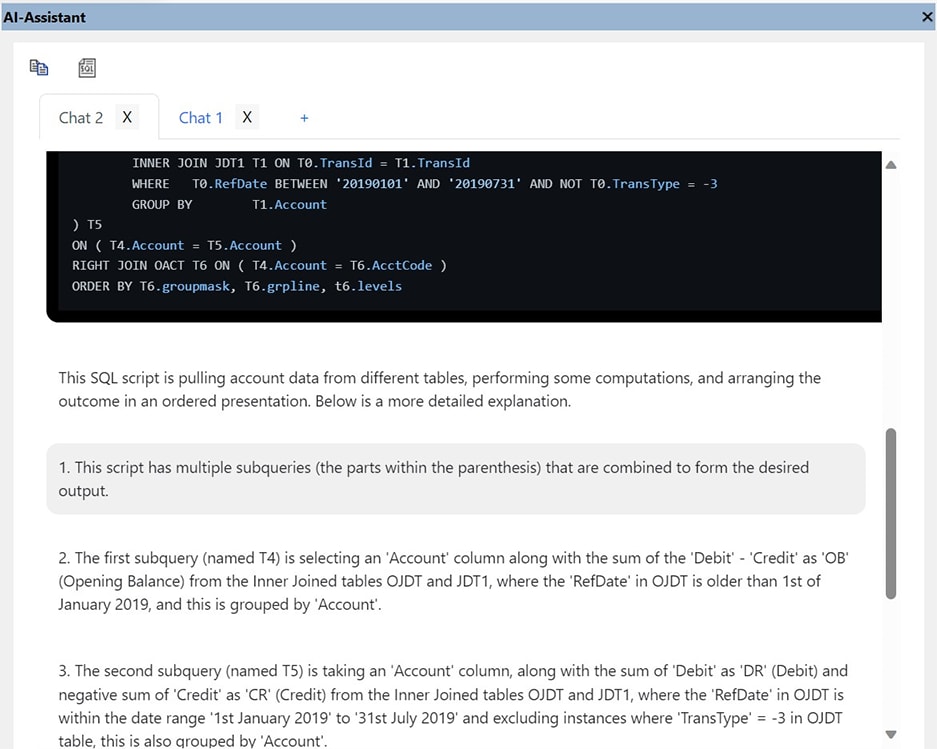2024-02-08T17:35:37
Status: #moc
Tags: #sql
Links: [[home]] | [[Technology]] | [[Standards]] | [[Database]] | [[Software Development]]
# SQL
## **Introduction**
Structured Query Language (SQL) stands as a cornerstone in the realm of [[database]] management, facilitating an effective framework for storing, manipulating, and retrieving data within a relational database system. This article aims to navigate through the trajectory of SQL—from its historical inception to prevalent trends and prospective outlooks—while spotlighting notable implementations and dialects that have significantly contributed to its evolution.
![[afalk42_an_illustration_of_SQL_databases_for_a_knowledge_base_a_10062409-2dc5-4c4e-8f97-cbe7a01ba0dd.png]]
## **History of the SQL Standard**
The genesis of SQL can be traced back to the 1970s, during which [[IBM]] researchers, notably Donald D. Chamberlin and Raymond F. Boyce, developed a prototype called SEQUEL (Structured English Query Language) as part of a system named "System R". Its primary goal was to enable users to interact with databases in a language that closely resembles English. Due to trademark issues, SEQUEL was later renamed to SQL.
The American National Standards Institute (ANSI) formally adopted SQL as a standard in 1986, marking the inception of SQL-86 or SQL-1. It has since undergone several revisions and extensions, including significant milestones like SQL-89 (minor revision), SQL-92 (SQL2, a major enhancement), SQL-1999 (SQL3, introducing procedural elements), and further extensions covering XML support, OLAP functions, and more up to SQL:2016 and beyond.
## **Notable Implementations**
While SQL forms the core dialect for interacting with relational databases, many database management systems (DBMS) implement their flavor of SQL, leading to a variety of notable implementations:
1. **[Oracle](https://www.oracle.com/database/technologies/) Database**: Renowned for its robust feature set, Oracle SQL incorporates advanced functionalities such as PL/SQL for procedural programming and efficient handling of large data warehousing operations.
2. **[MySQL](https://www.mysql.com/)**: Widely appreciated for its versatility and reliability, MySQL serves as the backbone for numerous web applications and stands out for its open-source accessibility.
3. **[Microsoft SQL Server](https://www.microsoft.com/en-us/sql-server)**: This implementation introduces T-SQL (Transact-SQL), an extension of SQL offering integrated declarative and procedural programming capabilities, tailored extensively for enterprise environments.
4. **[PostgreSQL](https://www.postgresql.org/)**: Often referenced as Postgres, it's acclaimed for its standards compliance and extensibility. PostgreSQL introduces unique features such as advanced data types and powerful concurrency mechanisms.
## **Notable Dialects**
SQL dialects refer to the variations in SQL syntax and functionality across different database systems. Each dialect tailors SQL to the specific features and capabilities of its DBMS, reflecting a diversity in handling data types, function calls, and procedural elements. Besides the implementations mentioned above, [MariaDB](https://mariadb.org/) (a fork of MySQL), [SQLite](https://www.sqlite.org/) (embedded DBMS), and [IBM DB2](https://www.ibm.com/products/db2) are notable for their distinct dialects and contributions to the broader SQL ecosystem.
## Notable SQL Tools
Many of the above-mentioned DBMS manufacturers ship their own proprietary tools with their database servers (e.g. [Microsoft SQL Server Management Studio](https://learn.microsoft.com/en-us/sql/ssms/sql-server-management-studio-ssms?view=sql-server-ver16)), which are specifically optimized for one particular database only, but there are also several universal [SQL editors](https://www.altova.com/databasespy/sql-editor) that support multiple different SQL backend systems, e.g. [HeidiSQL](https://www.heidisql.com/), which is primarily being used for MariaDB and MySQL.
![[Pasted image 20240217181740.png]]
But few tools can support *all* of the above SQL database systems and most multi-database tools require expensive connectors to add support for additional databases. An notable exception is Altova [[DatabaseSpy]], which supports all of the major SQL databases out of the box and provides a universal SQL Editor and querying/comparison/design tool for software developers, DB administrators, and IT admins alike:

In addition, [[DatabaseSpy]] recently added a brand-new [AI-Assistant for SQL](https://www.altova.com/databasespy/ai-assistant) that has the ability to generate SQL queries, tables, etc. as well as [explain complex SQL code in natural language](https://www.altova.com/databasespy/ai-assistant#ai-extensions), and even explain errors returned by the SQL database backend.

## **Current Trends**
**Cloud-Based Databases**: Cloud services such as Amazon RDS, Google Cloud SQL, and Azure SQL Database offer managed SQL database solutions, emphasizing scalability, availability, and managed services.
**NoSQL Integration**: The expanding data landscape necessitates SQL to integrate with NoSQL databases (e.g., MongoDB, Cassandra), supporting polymorphic data and providing a flexible schema architecture.
**Machine Learning and [[AI]]**: Enhanced capabilities for in-database analytics, allowing SQL queries to directly involve machine learning models and predictive analytics within transactional workflows.
**Automation and Optimization**: Tools and extensions focusing on query performance optimization, automated database maintenance, and real-time data analysis and reporting.
## **Future Outlook**
The proliferation of data-centric technologies projects SQL towards enhancing interoperability among diverse data storage and processing systems. Further standardization efforts aim to bridge gaps between SQL and NoSQL databases, fostering a unified query language landscape. Additionally, advancements in AI and machine learning are anticipated to integrate more deeply within SQL ecosystems, enabling more sophisticated data analysis and decision-making capabilities directly from SQL interfaces.
In conclusion, SQL's journey from a prototype language to a standardized query language underscores its central role in data management and analysis across industries. As we move forward, the evolution of SQL and its dialects promises to adapt to new challenges, ensuring its relevance in the ever-expanding domain of data science and database technology.